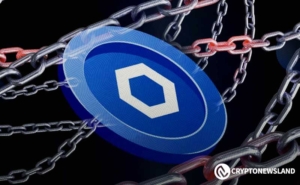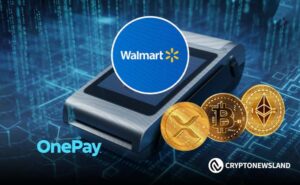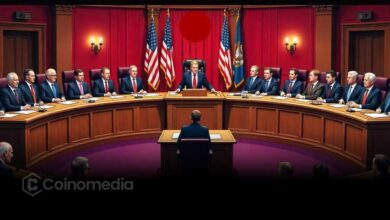News
Stay up to date on the latest crypto trends with our expert, in-depth coverage.






Cuomo proposes a Chief Innovation Officer to lead NYC’s push into blockchain and AI, aiming to make the city a global crypto hub.Cuomo’s Tech Vision for New York CityChief Innovation Officer: Driving the Blockchain AgendaMaking NYC a Global Crypto Hub

Coinbase, Chainlink, Galaxy, and others to meet Senate Democrats Wednesday to discuss crypto market structure legislation.Crypto Leaders Head to Capitol HillShaping the Future of Crypto RegulationWhy This Meeting Matters

US spot Bitcoin ETFs saw $1.23B in outflows last week, the second-largest to date. Ethereum ETFs followed with $311.8M in outflows.Massive Capital Exit Hits Bitcoin and Ethereum ETFsInvestor Sentiment Shifting Amid Market UncertaintyWhat This Could Mean for the Market
- 12:22Dark pool trading platform HumidiFi reaches $34 billion in trading volume over the past month, becoming the largest DEX on SolanaBlockBeats News, on October 20, the dark pool trading platform HumidiFi has become the largest trading platform on the Solana chain, with a record transaction volume of $34 billion in the past month. According to DefiLlama data, HumidiFi has surpassed the liquidity protocol Meteora, which has a transaction volume of $31 billion, and also outperformed the veteran Solana DEX Raydium (with a transaction volume of $21 billion). Just three months ago, the platform's average daily trading volume often struggled to exceed $100 million. Dark pool trading platforms (also known as dark pool automated market makers or proprietary market makers) are a type of trading platform on the Solana blockchain that have surged in popularity in recent months. Unlike the largest decentralized exchange Uniswap, dark pool market makers operate in the background. They typically do not have official websites and do not allow users to provide liquidity to earn swap fees. These platforms often rely entirely on liquidity provided by their creators (usually anonymous) and only accept trades routed through aggregators such as Jupiter. Although dark pool market makers are more transparent than centralized exchanges because all transactions are publicly viewable on-chain, they are less transparent in other aspects. Dark pool operators usually choose to remain anonymous, as they only interface with aggregators and do not directly serve traders. The HumidiFi development team remains anonymous to this day, although their X account activity suggests that their identities may be revealed soon.
- 12:22US-listed crypto platform Exodus launches common stock tokens on Solana blockchainBlockBeats News, October 20, according to official sources, self-custody cryptocurrency platform Exodus Movement, Inc. (NASDAQ: EXOD) announced today that shareholders can now choose to hold their Exodus Class A common stock in the form of common stock tokens on the Solana blockchain, with technical support from the joint transfer agent Superstate. These digital representations are not the actual shares themselves, but rather a digital reflection of shareholders' existing equity holdings as recorded in the transfer agent's books. Exodus's entry onto Solana is made possible by Superstate's issuance platform "Opening Bell," which allows companies to directly manage tokenized shares on blockchains such as Solana. As the first publicly listed company to offer common stock tokens, Exodus's common stock tokens now exist on both the Solana and Algorand blockchains, demonstrating Exodus's strong commitment to cross-chain functionality, including its own products.
- 12:22Current mainstream CEX and DEX funding rates indicate the market is slightly returning to neutrality during the rebound.BlockBeats News, October 20, according to Coinglass data, the current funding rates on major CEX and DEX platforms show that after today's rebound, the funding rates for multiple asset trading pairs have returned to neutral, but the overall sentiment remains bearish. The specific funding rates are shown in the chart below. BlockBeats Note: Funding rates are fees set by cryptocurrency trading platforms to maintain the balance between contract prices and the prices of underlying assets, usually applied to perpetual contracts. It is a mechanism for capital exchange between long and short traders. The trading platform does not charge this fee; it is used to adjust the cost or profit of holding contracts for traders, so that the contract price remains close to the price of the underlying asset. When the funding rate is 0.01%, it represents the benchmark rate. When the funding rate is greater than 0.01%, it indicates that the market is generally bullish. When the funding rate is less than 0.005%, it indicates that the market is generally bearish.